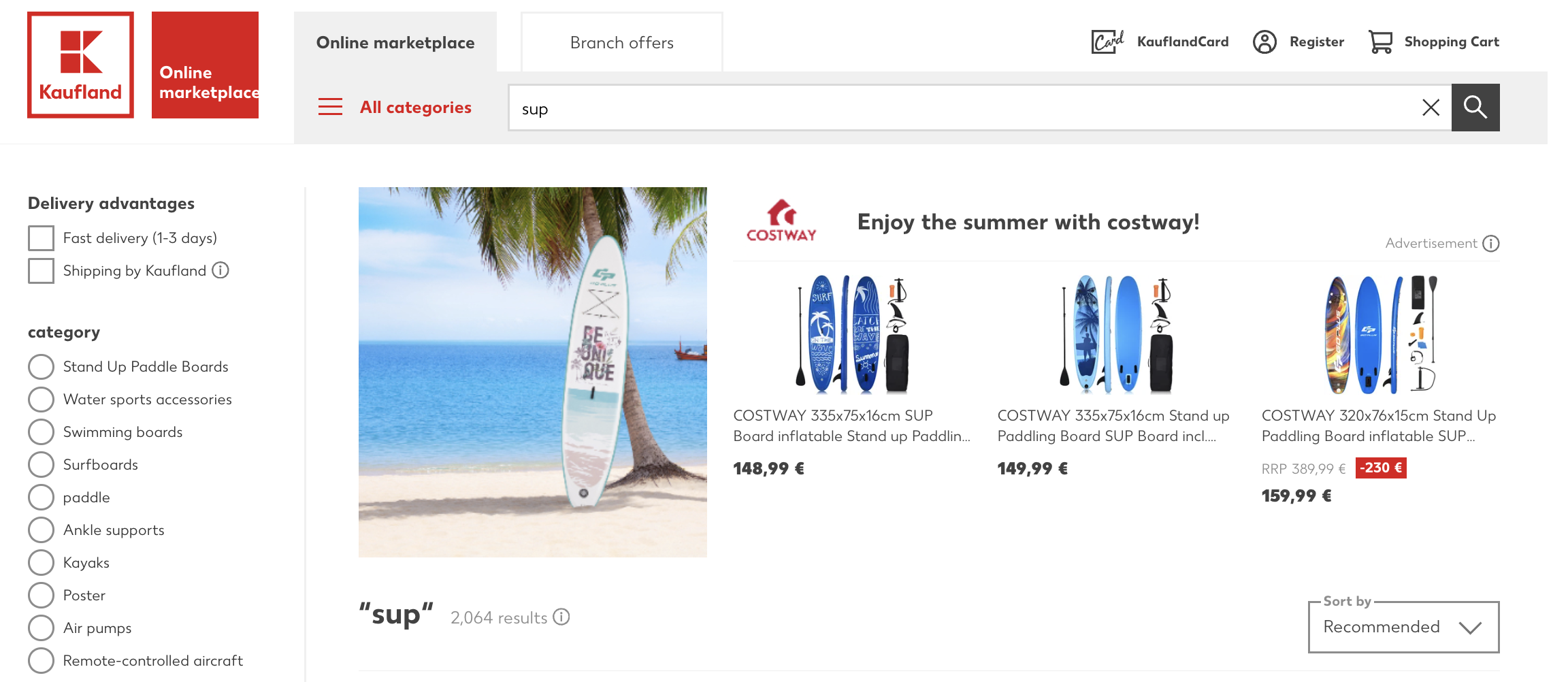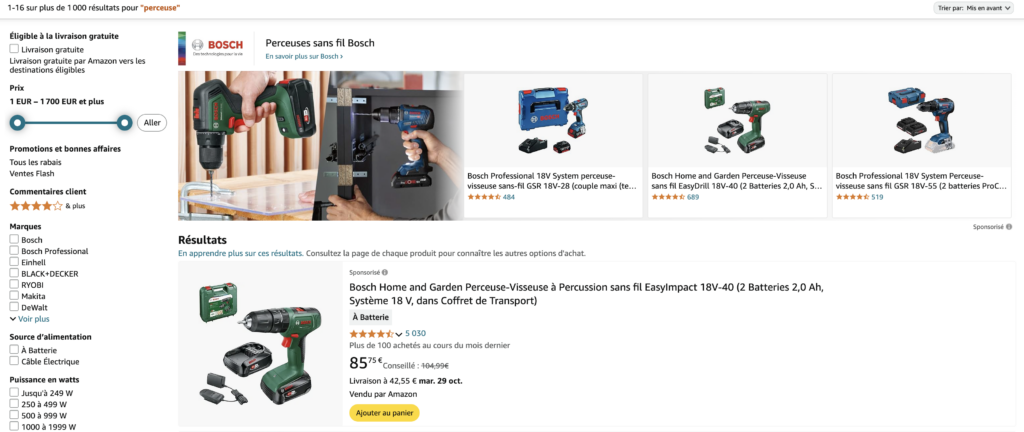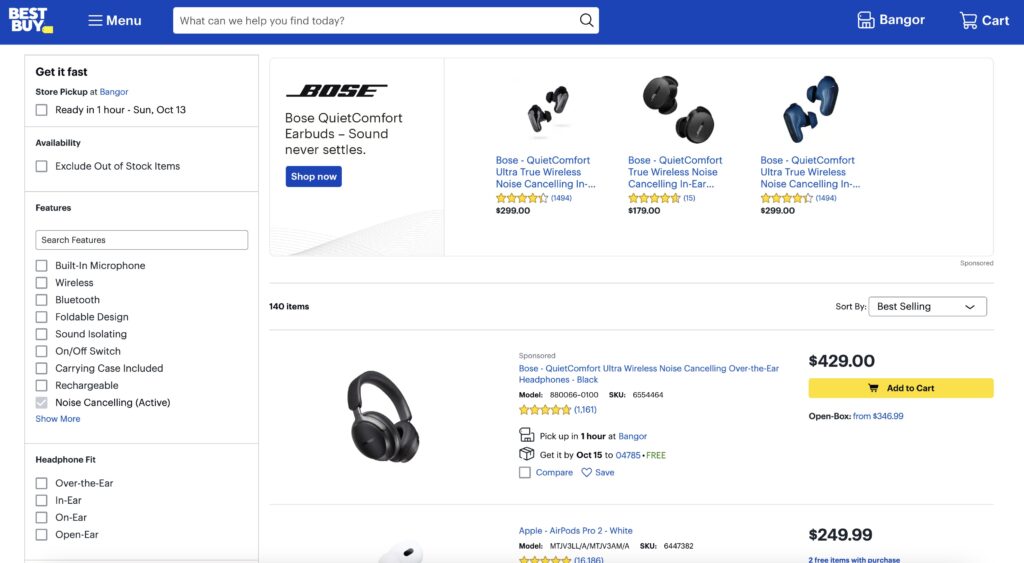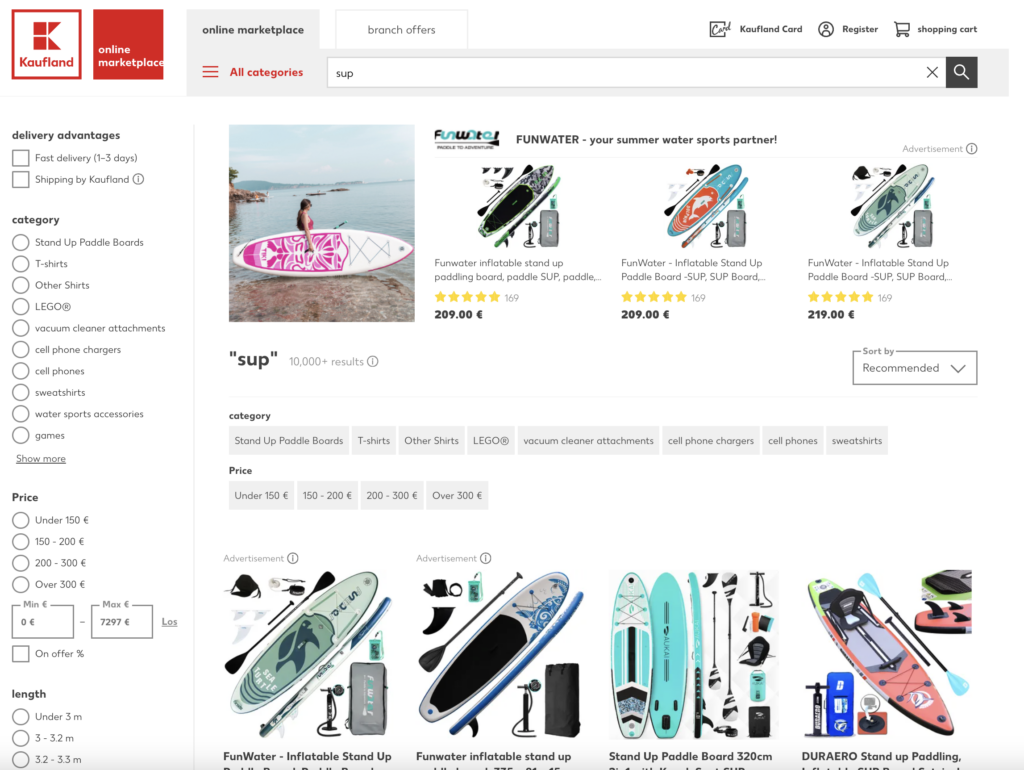Deep dive into Sponsored Brand Ads

Sponsored Brand Ads are not new in the retail media space. they were introduced by Amazon a few years ago and soon became the fastest growing ad type.
We would like to take a deeper look and share some best practices, what you should and shouldn’t do and what you could expect from it as a retailer.
Let’s start with Amazon first.
Amazon Sponsored Brand Ads, previously known as Amazon Headline Ads, are display ads that presents the advertiser’s logo, custom tag line, a URL and multiple products and it usually appears at the top of the search result pages.
These Ads became popular over the years — According to Jungle Scout, 57% of the enterprise sellers and 47% of SMB sellers on Amazon use them. Today ~15% of Amazon ad revenue comes from Sponsored Brand ads.
 Side note: If you are a marketplace or an online retailer, never forget that the majority of your retail media revenue (>80%) would likely come from Sponsored Product Ads. There are other retail media revenue streams (Sponsored Brand Ads, Offsite, Data and audience monetization, Display, Video, Non Endemic Ads etc.) but make sure your eyes are on the ball. And the ball is your Sponsored Product Ads.
Side note: If you are a marketplace or an online retailer, never forget that the majority of your retail media revenue (>80%) would likely come from Sponsored Product Ads. There are other retail media revenue streams (Sponsored Brand Ads, Offsite, Data and audience monetization, Display, Video, Non Endemic Ads etc.) but make sure your eyes are on the ball. And the ball is your Sponsored Product Ads.
The ROAS of Sponsored Brand Ads is 20% lower than the ROAS of Sponsored Product Ads. The reason is that it is more expensive and plays a upper funnel marketing role like awareness and not only performance. According to Pacvue, The CPC for SBA is 26% higher than the CPC of SPA and the eCPM is 75% higher!
Even tough it’s an upper funnel ad, the Sponsored Brand Ad also help the Sponsored Product Ads perform better. According to a study that was recently conducted by Criteo, shoppers who are exposed to both Sponsored Brand Ads and also to the Sponsored Product Ad of the same products are 58% more likely to purchase vs. those that are just exposed to the Sponsored Product Ad of the product.
When we look at the performance of Sponsored Brand Ads in various marketplaces we see big differences. While for some marketplaces it generates significant incremental revenue, for others it doesn’t.
Here are the main reasons:
Size (and position)
The stores that place the Sponsored Brand Ads at the top of the page and give it the proper size (at least the same height as the native Sponsored Product Ads) get much better performance and revenue than those that have a tight banner lookalike ad unit.



Competition
When you introduce Sponsored Brand Ads it’s like introducing Sponsored Product Ads for the first time.
You will not have a lot of campaigns and the competition will not be too high.
The result is that at the beginning the bids and CPCs (especially if you are doing a 2nd best bid auction) might not be as high as expected from such premium ads.
What can you do about it?
a. First you need to launch only after you onboard enough advertisers and have campaigns in the pipeline.
b. Communicate the new ad type to your advertisers, the advantages of upper funnel ads and how they work. Webinars, Emails, Case studies etc.
c. Set higher min bids for the Sponsored Brand Ads campaigns.
d. Enable fast and easy campaign creation! Creating Sponsored Brand Ads is time consuming for advertisers as it requires uploading images etc. You can make it easier for them and add the option to create a Sponsored Brand Ad when they create a regular Sponsored Product Ads campaign! We call this Dynamic Sponsored Brand Ads.

Even when you do all the above, because of the lack of competition, the CPCs of the available Sponsored Brand Ads might be lower than the CPCs of the Sponsored Product Ads in certain pages. In these cases you can decide not to show the Sponsored Brand Ad so that the Sponsored Product Ads with the higher bids will get better visibility and more clicks (this is a feature in our platform that you can choose to activate or not).
Premium brands
Sponsored Brand Ads work better when they are used by known brands and sellers that want to showcase their products. You, as the store owner, don’t want to give this premium shelf to unknown or low quality brands and products.
To do that you should invite only selected sellers to use the Sponsored Brand Ads and you should monitor the campaigns that they are creating and the images that they upload.

What next?
How about Sponsored Brand Video or Display? We will talk about that in the next blog post.
About Mabaya
Mabaya, a Criteo company, offers a white-label self-service retail media platform for online retailers and marketplaces that enables sellers and brands to bid in order to ensure their products are listed in premium locations in the online store.
The platform is integrated in more than 50 ecommerce sites around the globe (such as Jumia, Manomano, Kaufland, Falabella etc.), serving more than 80,000 advertisers and sellers.

